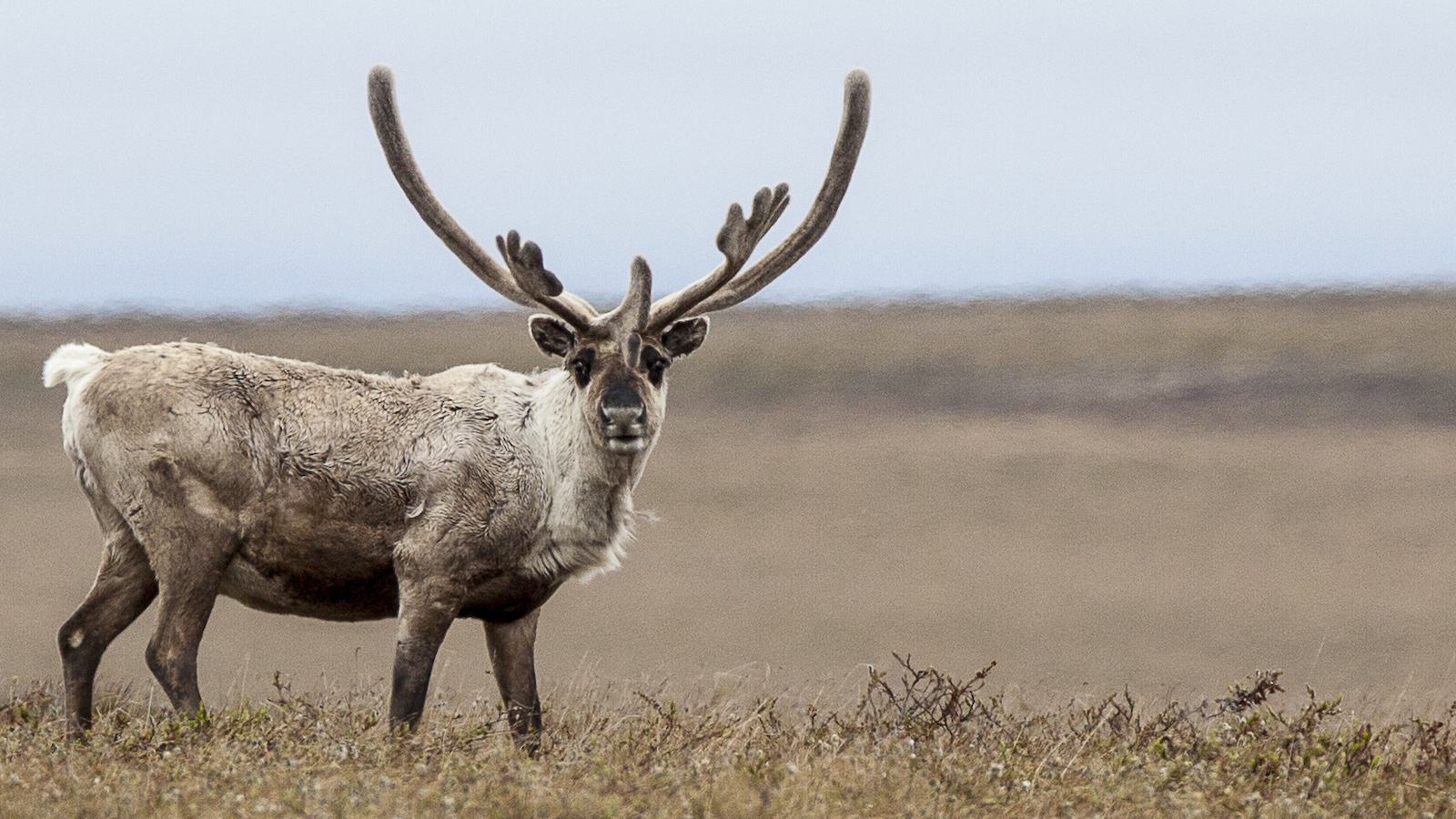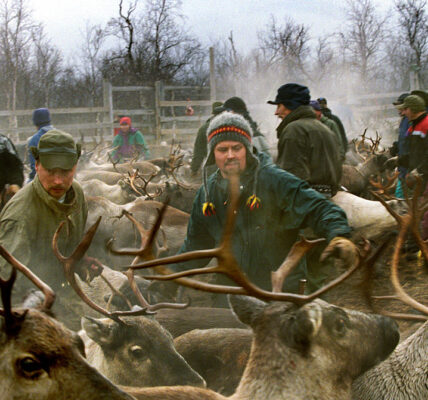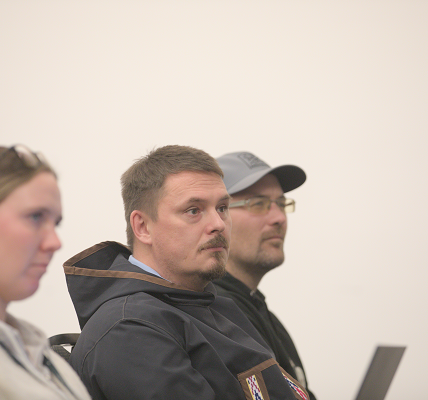ConocoPhillips’ controversial Willow Project isn’t the only oil drilling project threatening arctic animals.

The Western Arctic Reserve is home to arctic animals and indigenous communities whose relationship with their caribou neighbors spans thousands of years. Soon, courtesy of ConocoPhillips’ Willow Project, the area will also produce up to 576 million barrels of oil and 239 million metric tons of carbon dioxide emissions over 30 years. Before drilling even begins, the large infrastructure requirements of the project will fragment animal habitats and interfere with traditional subsistence hunting practices by indigenous people in northern Alaska. And without action from the Biden administration, millions of acres are open to future oil projects. Here’s how increased drilling could adversely affect arctic animals, the land and Alaska Natives.
Birds
The Teshekpuk Lake Special Area in the Western Arctic is a destination for birds. Six-hundred thousand nesting shorebirds each year enter the surrounding wetlands and 100,000 geese molt here. Nearby parts of western and northern Alaska boast other unique habitats that attract our fine feathered friends. For example, approximately one-fifth of the endangered yellow-billed loons in the world breed in western and northern Alaska. But some of these wetlands will soon also be a drilling site and it’s unclear where the birds will go.
Caribou
Two herds of caribou, the Western Arctic and the Teshekpuk Lake, migrate through the region, covering a range nearly the size of California. Even before the disruption of the Willow Project, the Western Arctic herd is already in trouble. Its cow survival rate is too low to support herd growth. Caribou are integral to many communities in Alaska as both a primary source of food and part of their traditions.
Otters
Ninety percent of the world’s sea otters live in Alaska’s coastal waters, but this population is in trouble. The Southwest Alaska otter population has already declined 50% since the mid-1980s. Vessel collisions or oil spills could result in injury or death for Northern sea otters.
Polar bears
There are only about 900 Southern Beaufort Sea polar bears. One death could prevent the population’s recovery. Sea ice vanishing as a result of warming temperatures and heavy equipment from seismic exploration and drilling activities pose threats to the polar bear population. The sounds of development can scare mothers and cubs out too early from their dens, potentially causing deaths from exposure or starvation. Oil operations in polar bears’ habitats can result in bears crushed in their dens from vibrations from seismic vehicles and the noise of operations causing increased stress. In addition, oil spills can lead to the ingestion of oil or consumption of contaminated prey, which in turn can cause organ damage, starvation and death.
Seals
Since they rely on the ice’s solid surface for life, no seal can survive only in the water. As sea ice reduces due to global warming, arctic seals’ ability to perform basic survival activities like raising young or resting declines. Ringed and Bearded seal population sizes are also threatened by sealift barges delivering construction materials disrupting their habitat.
Whales
The ocean off the Western Arctic is home to rare and endangered whales. The North Pacific right whale is one of the rarest of all marine mammal species and all large whale species, listed as endangered since the 1970s with likely fewer than 500 remaining today. Another species and one of the few whale species that reside almost exclusively in the Arctic, the bowhead whale has also been listed as endangered since the 1970s. The population has been recovering since the 1900s, but drilling infrastructure could interfere with this progress. The Willow Project would build a Module Transfer Island in the bay near where a number of bowhead whales feed. The gravel island threatens the species with potential toxic chemical spill exposures and increased vessel traffic.
Fossils
The Western Arctic region has supported life for more than 100 million years. We know this because 13 species of dinosaur fossils have been found by archaeologists. Some of the fossils date from 68 million to 73 million years ago to the late Cretaceous period. Archaeologists have found fossils of Theropods, a cousin of the Tyrannosaurus Rex. The river’s northern big bend is the world’s best-known site for them. Along the river, eight dinosaur species were estimated to have inhabited the area some 90 million to 110 million years ago. Mammoths, bison and horse fossils were discovered dating to the late Pleistocene era, some 10,000 to 35,000 years ago.
Northern Alaskan tribal communities
The Gwich’in and Iñupiat people have a long relationship with the land and wildlife of the Western Arctic. The former rely on the caribou as their source of clothing, food and spiritual connection to the land for generations. The Gwich’in people believe that the land sustains the caribou and the caribou sustain the people. The Iñupiat community’s most important resource for survival is the bowhead whale.
In Nuiqsut, the Iñupiat community closest to the proposed Willow project, residents’ daily lives and livelihoods have already been disrupted by oil and gas drilling sites. Sick fish, toxic air quality, and signs of starvation in caribou are some of the consequences they have observed from the oil and gas extraction near their homes.
Did you enjoy this article? Take a quiz to see which arctic animal you are.
We and the arctic animals and people that live there have much to lose if we develop the Western Arctic. While originally established as a “petroleum reserve,” we are long past the point where it makes sense to destroy this wild area for just a little more oil that may not be available for years. Instead of beginning to disrupt previously untouched land, the U.S. should focus efforts and funds on reliable, renewable energy.

white polar bear on snow covered ground during daytimePhoto by Hans-Jurgen Mager | Unsplash.com
AUTHORS
Ellen Montgomery
Director, Public Lands Campaign, Environment America Research & Policy Center
Ellen runs campaigns to protect America’s beautiful places, from local beachfronts to remote mountain peaks. Prior to her current role, Ellen worked as the organizing director for Environment America’s Climate Defenders campaign. Ellen lives in Denver, where she likes to hike in Colorado’s mountains.
Catherine Lockett
Environment America Intern





Thanks for sharing. I read many of your blog posts, cool, your blog is very good.